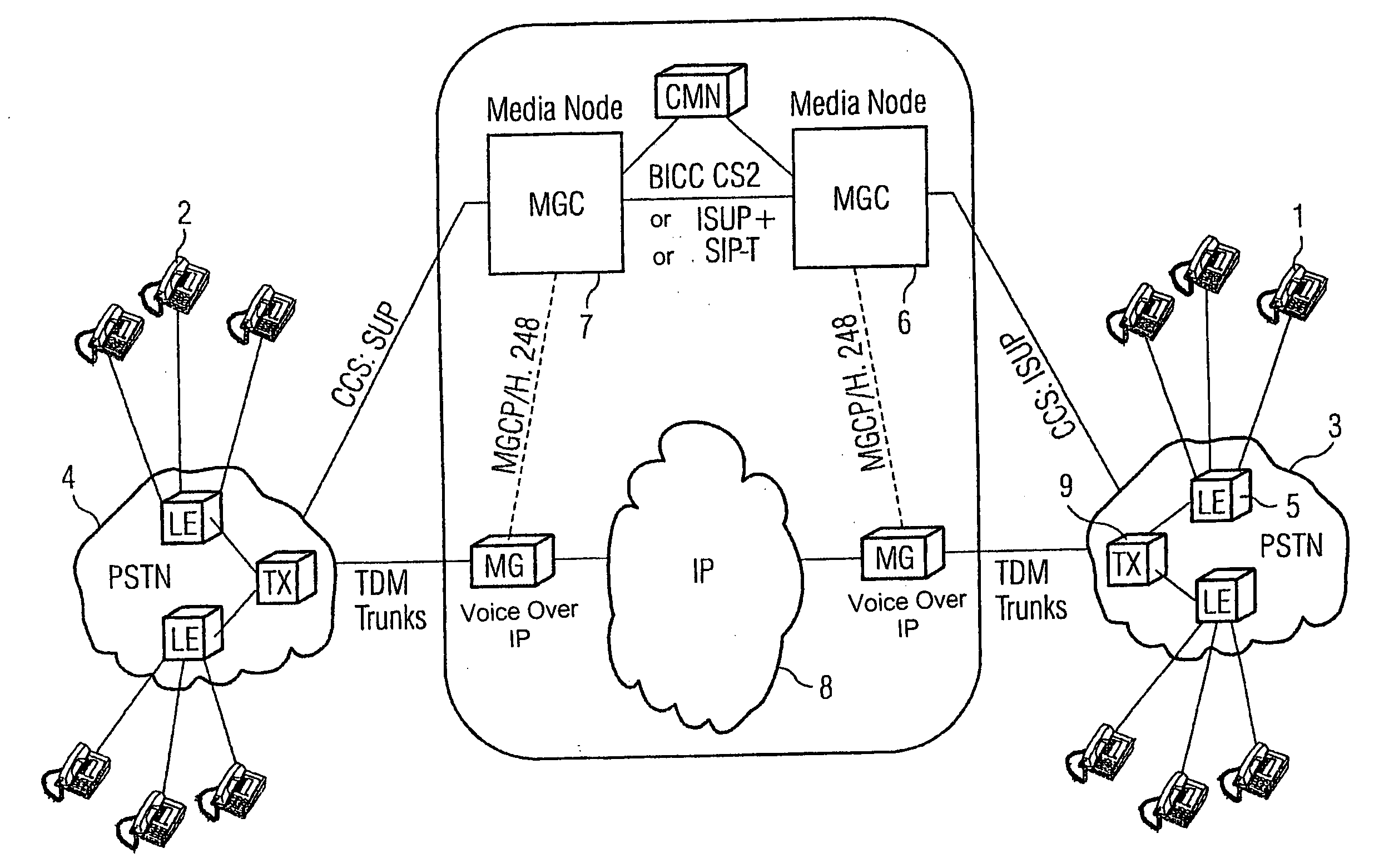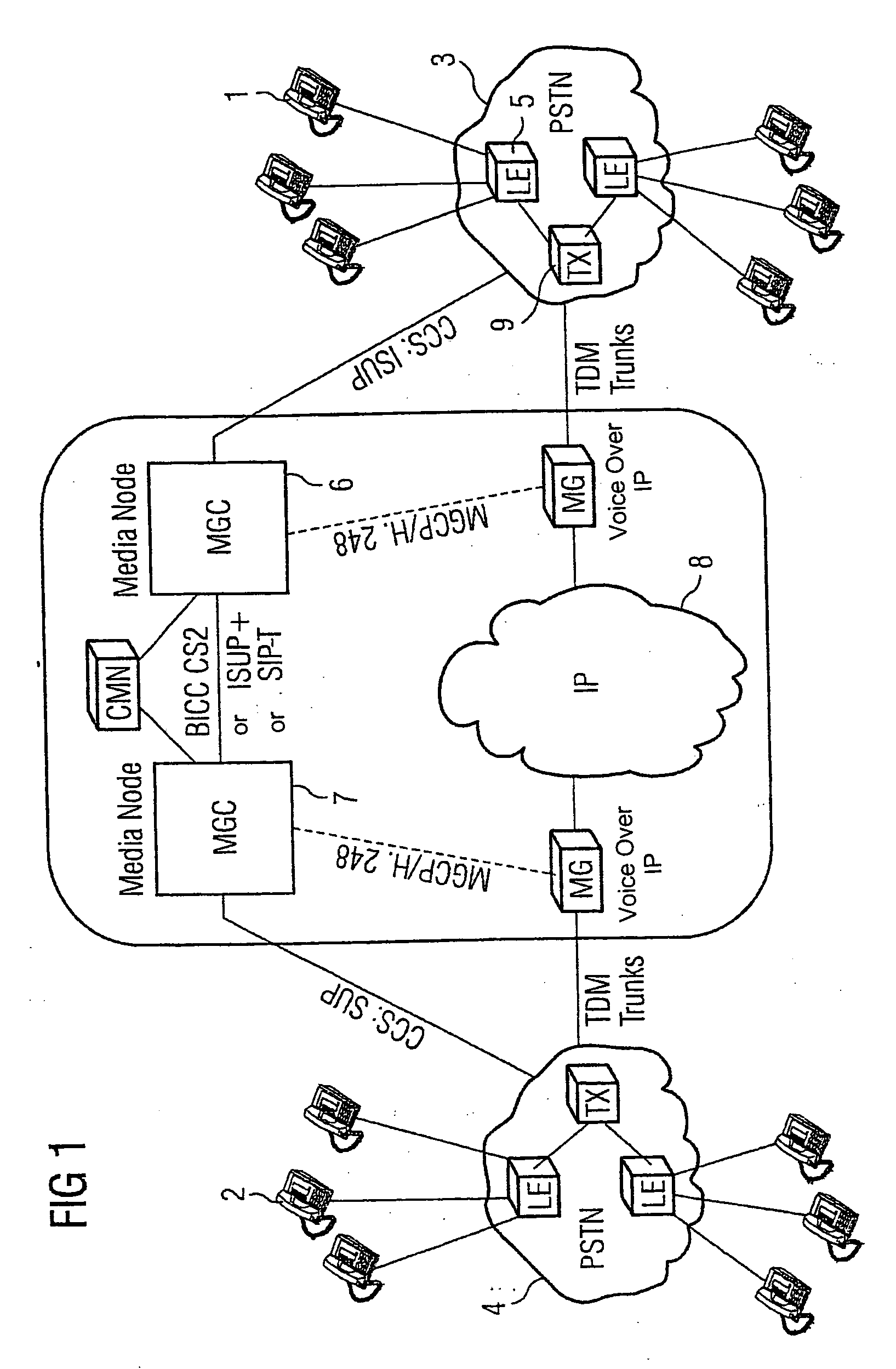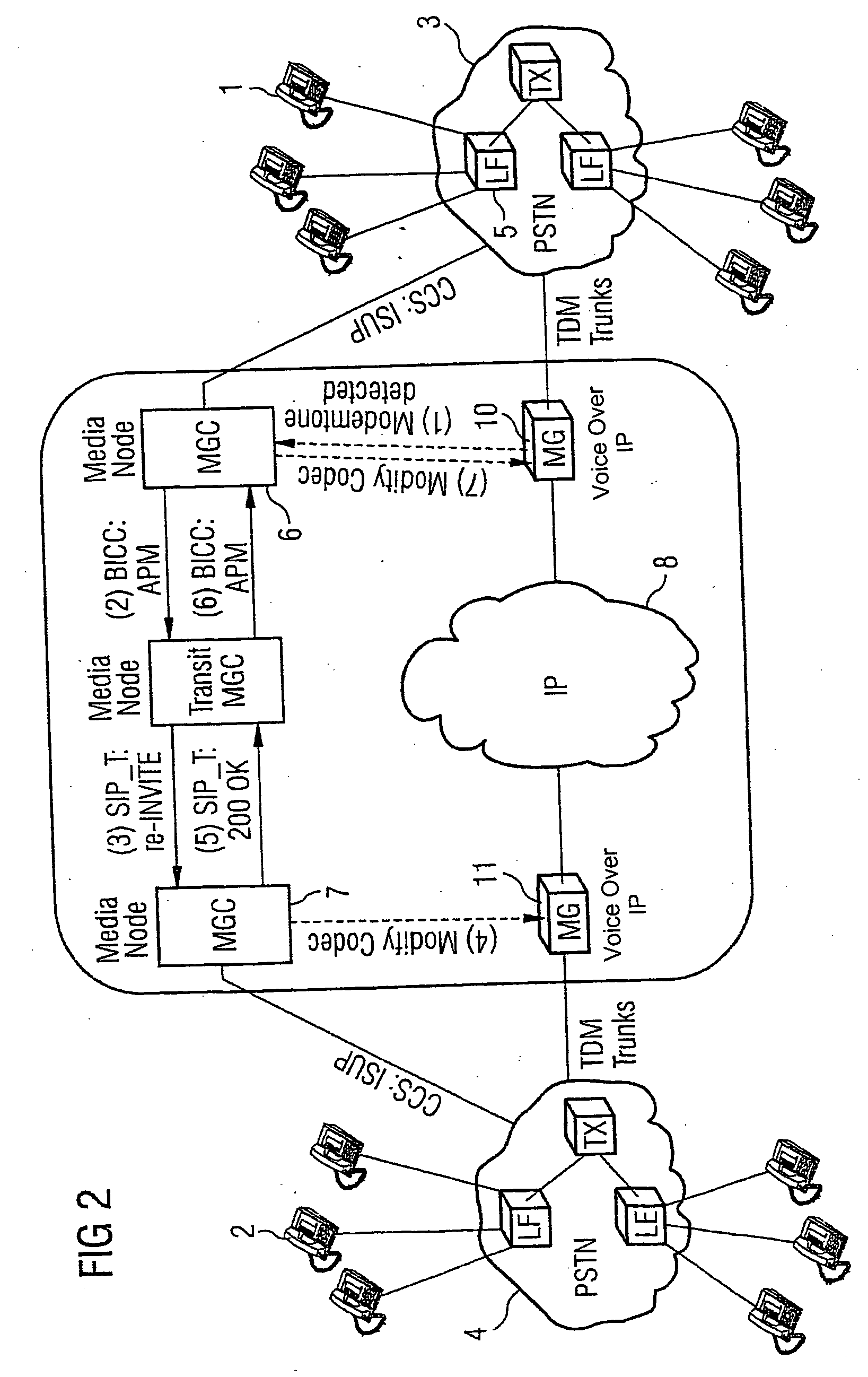Support for fax and modem in sip/sip-t networks and the interworking of these networks with isup+/bicc
a technology of sip/sip-t network and interworking network, applied in the direction of data switching network, digital transmission, echo suppressor/canceller, etc., can solve problems such as inability, and achieve the effects of cost saving, improved data transmission quality, and easy implementation
- Summary
- Abstract
- Description
- Claims
- Application Information
AI Technical Summary
Benefits of technology
Problems solved by technology
Method used
Image
Examples
first embodiment
[0048]FIG. 2 shows a schematic representation of the invention. With regard to the method represented, data is sent from the telecommunication terminal device 1 of an A subscriber to a first media gateway 10 where, on the basis of the data transferred, the ITU-T standard (or the coding type) of the data transmission is determined. The result is then transferred to a first media gateway controller 6, associated with the first media gateway 10, where a codec required for the data transfer operation on the B-channel is determined on the basis of the ITU-T standard ascertained. The result of determining the requisite codec is transferred to a second media gateway controller 7 by means of corresponding signaling.
[0049] The second media gateway controller 7 controls an associated second media gateway 11 which constitutes the interface to the telecommunication terminal device 2 of a B subscriber. Subsequently, the first or second media gateway controller 6, 7 in the associated first or sec...
second embodiment
[0054] Other embodiments of the method according to the invention are naturally also conceivable, however. Further possible interworking scenarios would be SIP client intercommunication with a VoIP trunking subscriber, whereby the configuration should be organized as in the case of the second embodiment, except that in this situation a single media gateway controller would suffice instead of two media gateway controllers because one BICC CS2 / ISUP+ is dispensed with between exchange signaling.
[0055] SIP client intercommunication with an access gateway (HIA7600) or with an H.323 subscriber, VoDSL subscriber or SIP client would also be conceivable.
PUM
 Login to View More
Login to View More Abstract
Description
Claims
Application Information
 Login to View More
Login to View More - R&D
- Intellectual Property
- Life Sciences
- Materials
- Tech Scout
- Unparalleled Data Quality
- Higher Quality Content
- 60% Fewer Hallucinations
Browse by: Latest US Patents, China's latest patents, Technical Efficacy Thesaurus, Application Domain, Technology Topic, Popular Technical Reports.
© 2025 PatSnap. All rights reserved.Legal|Privacy policy|Modern Slavery Act Transparency Statement|Sitemap|About US| Contact US: help@patsnap.com



